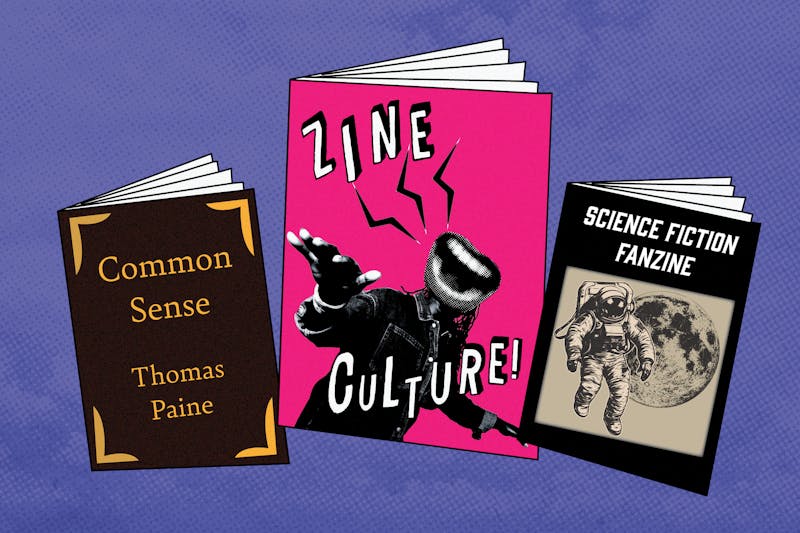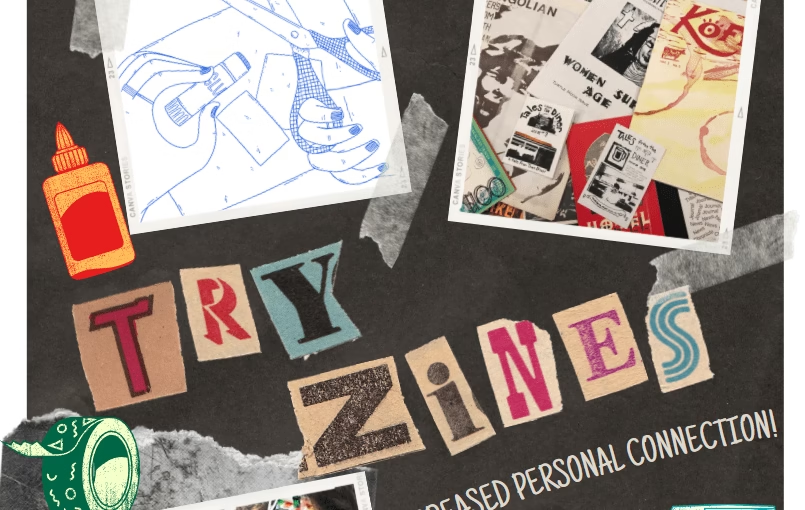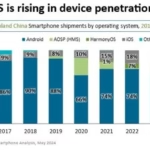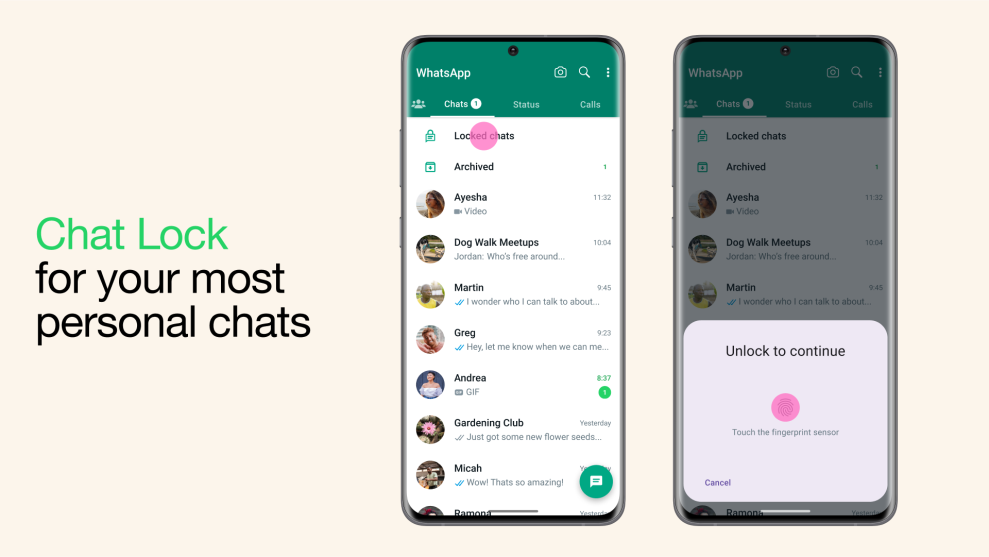Why Are Zines Making a Comeback? Exploring the Resurgence of Print Culture
Estimated reading time: 9 minutes
Key Takeaways
- The resurgence of print zines is a direct response to pervasive *digital fatigue*.
- Gen Z reviving zine culture is a major driver, seeking authenticity and offline community.
- Zines offer a powerful platform for free expression and community, bypassing digital gatekeepers.
- Engaging with zines provides tangible benefits of reading and making zines for creators and readers alike.
- Zines represent a thriving alternative to mainstream and social media, prioritizing depth and connection over scale.
Table of contents
- Why Are Zines Making a Comeback? Exploring the Resurgence of Print Culture
- Key Takeaways
- Introduction
- Section 1: Digital Fatigue and the Search for Tangible Alternatives
- Section 2: The Influence of Gen Z
- Section 3: The Unique Appeal: Expression and Community
- Section 4: Tangible Benefits of Engaging with Zines
- Conclusion
- Frequently Asked Questions
Introduction
In a world increasingly dominated by flickering screens, fleeting digital trends, and algorithmically curated feeds, there’s a quiet but powerful counter-movement gaining momentum. It’s the resurgence of print culture, and at its heart lies a humble, often quirky, and intensely personal medium: the zine. You might be asking, why are zines making a comeback in this hyper-digital era? How are these small, self-published paper creations capturing the imagination of a new generation of creators and readers?
.jpg)
So, what *is* a zine exactly? Pronounced ‘zeen’ (short for magazine), zines are typically small-circulation, self-published works of original or appropriated texts and images, often reproduced via photocopying. They are the antithesis of mainstream media – lo-fi, low-budget, and fiercely independent. Historically, zines served as vital underground arteries for subcultures, from science fiction fandom in the 1930s to the punk rock, feminist, and queer movements of later decades, offering uncensored platforms for voices excluded from the mainstream.

Yet, despite their analog roots, zines are experiencing a vibrant revival. They are not just historical relics; they are thriving, particularly among young people. This post will delve into the core reasons behind this fascinating phenomenon, exploring how zines offer a much-needed antidote to the digital deluge, why young people are championing print, the unique power of zines for personal expression and community building, and the distinct benefits of reading and making zines.
Section 1: Digital Fatigue and the Search for Tangible Alternatives
One of the most significant forces driving the modern zine renaissance is a widespread and growing sense of… well, digital exhaustion. Many people today feel perpetually tethered to their devices, overwhelmed by the sheer volume of information, notifications, and the pressure to maintain a curated online presence. This pervasive feeling of digital fatigue is leading many to seek out more grounded, tactile, and intentional ways to consume content and connect with the world.

Enter zines, serving as a powerful zines as an alternative to social media and mainstream digital platforms. Unlike the endless scroll of social feeds or the fleeting nature of online interactions, zines offer something *physical*. They exist in your hands. They have weight, texture, and the subtle scent of ink and paper. This tangible quality provides a crucial escape from the purely digital realm, a moment of disconnect that feels increasingly valuable.

Furthermore, zines offer unfiltered, lasting content. There’s no algorithm deciding what you see, no ads tracking your every click, no pressure for content to go “viral.” Zines are direct lines of communication from creator to reader. This raw authenticity and permanence resonate deeply in a world where digital validation can feel ephemeral and manufactured. Holding a zine is an act of engaging with someone’s direct expression, unmediated and unoptimized for mass consumption.
Zines also serve as a powerful counterpoint to the homogenization often found in online spaces. While social media algorithms tend to push popular content and reinforce dominant narratives, zines are inherently niche. They celebrate individuality, eccentricity, and subjects that would never find a mass audience online. This makes them a refreshing alternative to the often-samey landscape of digital media, offering unique, curated, tactile experiences of consuming content. They remind us that there’s value in the small-scale, the personal, and the deliberately non-commercial.
In essence, the comeback of zines is partly an act of rebellion against the digital status quo. It’s a conscious choice to slow down, to engage with something physical and authentic, and to seek connection outside the often superficial structures of online interaction. This desire for the tangible, the personal, and the unfiltered is a major reason why are zines making a comeback now, more than ever.
Section 2: The Influence of Gen Z
Perhaps surprisingly to some, one of the most significant forces behind the modern zine surge is the generation often thought to be most inseparable from their screens: Generation Z. Despite being raised entirely in the digital age, Gen Z has become a major force Gen Z reviving zine culture. This isn’t just nostalgia; it’s a deliberate embrace of a medium that serves their specific needs and values in a complex digital world.

So, *why* are young people flocking to this decidedly analog form of expression? Several factors are at play. Firstly, Gen Z places a high value on authenticity and the do-it-yourself (DIY) ethos. Zines, with their often raw, unpolished, and deeply personal nature, perfectly embody these values. They are a direct contrast to the highly filtered, curated, and often commercialized content that dominates platforms like Instagram or TikTok.

Furthermore, zines offer Gen Z a space to bypass digital gatekeepers and express ideas or identities that might not find sufficient room – or feel safe – on mainstream, public social media platforms. Topics like mental health, social justice issues, niche interests, personal identities, and experimental art can be explored with complete freedom in a zine, without fear of censorship, algorithmic suppression, or the pressures of public validation. It’s a private or semi-private space for expression that contrasts sharply with the constant performance required online.
For Gen Z, zines represent a powerful form of self-empowerment. Creating a physical object, a tangible publication, is a deliberate statement against the increasingly commercialized and data-driven aspects of the digital world. It’s about reclaiming ownership of one’s creative output and sharing it on one’s own terms, outside the control of large tech companies.
The growing popularity of events like zine fairs among young people further highlights this trend. These fairs are not just marketplaces; they are crucial community spaces. They provide opportunities to connect with like-minded individuals, share work, trade zines, and build genuine offline relationships centered around shared interests and creative pursuits. This desire for tangible community interaction, a stark contrast to online-only relationships, is a key aspect of Gen Z reviving zine culture.
By embracing zines, Gen Z is demonstrating that the value of print and tangible expression is far from dead. They are showing that in an age of digital overload, there is a profound need for media that is personal, authentic, and rooted in real-world connection, answering the question of why are zines making a comeback with a resounding, “Because they offer what the digital world often lacks.”
Section 3: The Unique Appeal: Expression and Community
Beyond the reaction to digital fatigue and the influence of younger generations, the enduring appeal of zines lies in their fundamental capacity for raw, unfettered expression and the powerful communities they build. Zines are beloved precisely because they are spaces for voices and ideas that are often marginalized, ignored, or even censored in mainstream media or the more filtered environments of social media platforms.

Zines provide an open platform for niche topics, radical politics, experimental art, fan fiction, personal manifestos, or deeply vulnerable storytelling – anything goes. There are no editors to appease, no advertisers to worry about, and no commercial viability requirements. This freedom allows creators to explore subjects and perspectives with a depth and honesty rarely found elsewhere. They can amplify voices and ideas that would otherwise remain unheard.
Historically, zines have been vital tools for social movements. The punk scene used zines to share music, art, and anti-establishment views. Feminist zines (or ‘riot grrrl’ zines in the 90s) created spaces for discussing women’s experiences and political activism outside patriarchal media. Queer zines built community and shared narratives in times when mainstream representation was non-existent or hostile. This legacy continues today, with zines serving as crucial vehicles for grassroots activism and social commentary.
Today, zines continue to foster inclusive, grassroots communities. Zine culture thrives through physical events like fairs, workshops, and swap meets. These spaces bring creators and readers together face-to-face, building meaningful, often offline, connections. There are also informal networks of sharing, trading, and mailing zines, creating a tangible flow of ideas and artistry that bypasses traditional distribution channels and digital algorithms.

This focus on niche, personal connection is key. As one commentator puts it:
This quote perfectly encapsulates the focused and personal nature of zine creation and readership. Zines aren’t aiming for millions of likes; they’re aiming for genuine connection with a dedicated few who truly understand and appreciate the specific message or aesthetic. This is the essence of zines for free expression and community – creating resonant, authentic work that finds its people, building connections one page at a time. This intrinsic appeal is a core reason why are zines making a comeback.
Section 4: Tangible Benefits of Engaging with Zines
Beyond the cultural and social factors, engaging with zines offers distinct practical and emotional advantages for both the people who make them and the people who read them. These benefits of reading and making zines contribute significantly to the medium’s current popularity.
For Creators:
Making a zine is an incredibly rewarding creative outlet. It is a space unrestricted by the demands of commercial profitability, algorithmic visibility, or external approval. You are the sole editor, designer, and publisher. This freedom allows for pure creative exploration.

The process of creating a physical zine also offers opportunities to develop diverse practical skills. You learn about writing, editing, visual design, illustration, layout, and even basic print production techniques like photocopying, folding, cutting, and binding. These are tangible skills that extend beyond the digital realm.
Perhaps most importantly, there is a powerful and deep strong sense of accomplishment and ownership derived from creating a physical artifact. Holding the finished zine in your hands – something you conceived, designed, and assembled – is a unique feeling. Each completed zine is a tangible object representing personal effort, vision, and expression. It exists offline, a physical manifestation of your ideas, which feels incredibly satisfying in a digital-first world.
For Readers:
For readers, zines provide exposure to highly curated, original perspectives and underrepresented voices that are often difficult to find elsewhere. In an era of content bubbles and algorithmic recommendations, zines offer a refreshing dose of unexpected, personal, and often raw material that broadens horizons and challenges conventional views.

There is also the unique tactile pleasure of engaging with a physical print object. The feel of the paper, the visible texture of photocopied images, the way the pages turn, the imperfections inherent in DIY printing – these sensory experiences are fundamentally different from staring at a smooth, backlit screen. It’s a slower, more intentional form of consumption that can be deeply relaxing and engaging.
Finally, reading zines offers the opportunity to directly support independent creators and connect with like-minded enthusiasts. Buying or trading a zine is a direct transaction with the artist or writer. Zine fairs and events provide spaces to meet creators and fellow readers, fostering a sense of belonging among people who share niche interests and values. These connections are often more authentic and meaningful than online interactions.
These distinct benefits of reading and making zines contribute significantly to their growing appeal, providing compelling reasons why are zines making a comeback as a vital form of independent media and personal expression.
Conclusion
So, why are zines making a comeback? As we’ve explored, the reasons are multifaceted, reflecting deeper shifts in how we consume information, express ourselves, and build communities in the 21st century. The resurgence is undeniably driven by a collective desire for alternatives to the relentless demands and often superficial connections of the digital world – a powerful antidote to pervasive digital fatigue.
Crucially, the active participation of Gen Z reviving zine culture demonstrates that this movement is not just about nostalgia. A generation raised on screens is deliberately choosing print, drawn to the authenticity, the DIY ethos, and the opportunity to build offline community that zines provide. They see zines as a way to reclaim their voices and connect on their own terms, outside the structures of corporate social media.
At its core, the enduring value of zines lies in what zines for free expression and community offer. They are platforms for marginalized voices, niche interests, and radical ideas that bypass traditional gatekeepers. They foster genuine, grassroots connections among like-minded individuals, creating vibrant subcultural communities that thrive both online and, importantly, offline.
The benefits of reading and making zines are clear, ranging from developing practical skills and experiencing the satisfaction of creating a tangible object for creators, to discovering unique perspectives and enjoying the tactile pleasure of print for readers. These tangible and intangible rewards make engaging with zines a uniquely fulfilling experience.
Ultimately, zines are proving to be more than just a fleeting trend or a wave of retro cool. They are an essential, resilient part of the landscape of independent media and print culture. They build and sustain subcultural communities and provide crucial, uncensored spaces for voices and ideas that might otherwise remain unheard in the noise of mass digital media. The zine comeback underscores the enduring power of physical creation, genuine connection, and authentic self-expression in our increasingly digital age.
Frequently Asked Questions
- What is a zine and how is it different from a magazine?A zine (pronounced ‘zeen’, short for magazine) is a small-circulation, self-published work often created by individuals or small groups using low-cost methods like photocopying. Unlike traditional magazines, zines are non-commercial, focus on niche topics, are often highly personal or political, and lack formal editing or distribution structures. They prioritize free expression over profit or broad appeal.
- Why are zines experiencing a comeback now?The comeback is driven by several factors, including widespread digital fatigue from screens and social media overload, a desire for tangible and authentic content, the influence of younger generations like Gen Z who value DIY culture and offline community, and the need for platforms for free expression and marginalized voices that bypass mainstream media and digital censorship.
- Is zine culture primarily online or offline?While zines can be discovered and promoted online (e.g., on social media, websites), the core of zine culture remains rooted in the physical object and offline interaction. Zine fairs, workshops, trading, and hand-to-hand distribution are central to the community. The tangible nature of the zine itself is a key part of its appeal as an alternative to purely digital content.
- What kind of content is typically found in zines?Almost anything can be in a zine! Content is highly diverse and often personal or niche. Common topics include personal essays, poetry, short fiction, illustrations, comics, photography, political commentary, social justice issues, fan work, guides to DIY skills, specific subculture interests (music, fashion, hobbies), mental health, identity, and experimental art or writing. There are no rules on content or format.
- How can someone get involved in zine culture?You can get involved by reading zines (look for zine distros online, visit local independent bookstores or libraries with zine collections, attend zine fairs), or by making your own! Zine-making requires minimal resources – just paper, a pen, scissors, and a photocopier or printer. Many communities also offer zine workshops and meetups, which are great places to learn and connect.






